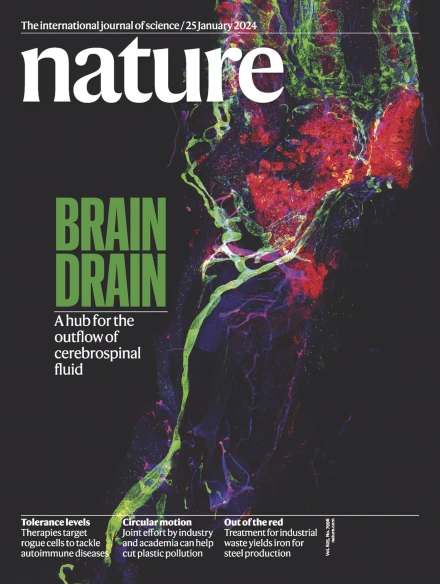最早的羊膜动物足迹重新校准了四足动物进化的时间轴
IF 48.5
1区 综合性期刊
Q1 MULTIDISCIPLINARY SCIENCES
引用次数: 0
摘要
已知的冠群羊膜动物的化石记录始于晚石炭世,有蜥脚类的足迹制造者Notalacerta1、2和蜥脚类的身体化石Hylonomus1、2、3、4。冠群四足动物最早的体化石是中石炭世,最古老的足迹是早石炭世5、6、7。提示四足动物冠群起源于石炭世早期(图尔奈世早期),羊膜动物冠群出现于晚石炭世早期。在这里,我们展示了来自澳大利亚的新轨道数据,挑战了这个被广泛接受的时间表。陶古隆地区维多利亚雪原地层的一块有脚印的石板,可以确定地追溯到图尔奈早期的8、9世纪,上面显示了一种有爪足的冠群羊膜动物的脚印,很可能是一种原始的蜥脚类动物。这将冠群羊膜动物的可能起源推迟了至少3500万到4000万年。我们还将Notalacerta的范围扩展到早石炭世。澳大利亚径迹表明,羊膜动物冠群节点不可能比泥盆纪/石炭纪边界年轻很多,四足动物冠群节点一定位于泥盆纪深处;根据分子树枝长度的估计,后者的年龄大约在早期弗拉斯尼亚。这对四足动物的早期进化意义深远;所有茎-四足动物和茎-羊膜动物谱系都起源于泥盆纪。似乎四足动物的进化速度要快得多,泥盆纪的四足动物记录比人们认为的要不完整得多。本文章由计算机程序翻译,如有差异,请以英文原文为准。


Earliest amniote tracks recalibrate the timeline of tetrapod evolution
The known fossil record of crown-group amniotes begins in the late Carboniferous with the sauropsid trackmaker Notalacerta1,2 and the sauropsid body fossil Hylonomus1–4. The earliest body fossils of crown-group tetrapods are mid-Carboniferous, and the oldest trackways are early Carboniferous5–7. This suggests that the tetrapod crown group originated in the earliest Carboniferous (early Tournaisian), with the amniote crown group appearing in the early part of the late Carboniferous. Here we present new trackway data from Australia that challenge this widely accepted timeline. A track-bearing slab from the Snowy Plains Formation of Victoria, Taungurung Country, securely dated to the early Tournaisian8,9, shows footprints from a crown-group amniote with clawed feet, most probably a primitive sauropsid. This pushes back the likely origin of crown-group amniotes by at least 35–40 million years. We also extend the range of Notalacerta into the early Carboniferous. The Australian tracks indicate that the amniote crown-group node cannot be much younger than the Devonian/Carboniferous boundary, and that the tetrapod crown-group node must be located deep within the Devonian; an estimate based on molecular-tree branch lengths suggests an approximate age of early Frasnian for the latter. The implications for the early evolution of tetrapods are profound; all stem-tetrapod and stem-amniote lineages must have originated during the Devonian. It seems that tetrapod evolution proceeded much faster, and the Devonian tetrapod record is much less complete, than has been thought. Analysis of a fossil trackway from the earliest Carboniferous of Australia shows prints of toes with claws, suggesting that the origin of amniotes was at least 35–40 million years earlier than previously thought.
求助全文
通过发布文献求助,成功后即可免费获取论文全文。
去求助
来源期刊

Nature
综合性期刊-综合性期刊
CiteScore
90.00
自引率
1.20%
发文量
3652
审稿时长
3 months
期刊介绍:
Nature is a prestigious international journal that publishes peer-reviewed research in various scientific and technological fields. The selection of articles is based on criteria such as originality, importance, interdisciplinary relevance, timeliness, accessibility, elegance, and surprising conclusions. In addition to showcasing significant scientific advances, Nature delivers rapid, authoritative, insightful news, and interpretation of current and upcoming trends impacting science, scientists, and the broader public. The journal serves a dual purpose: firstly, to promptly share noteworthy scientific advances and foster discussions among scientists, and secondly, to ensure the swift dissemination of scientific results globally, emphasizing their significance for knowledge, culture, and daily life.
 求助内容:
求助内容: 应助结果提醒方式:
应助结果提醒方式:


